For more than 200 years, the Petts family was the country’s leading shipbuilder. In 1634, Phineas Pett designed Sovereign of the Seas, for Charles I. The finest ship of her age, she sailed the seas until catching fire in 1697.
A wooden sculpture of the Sovereign of the Seas.
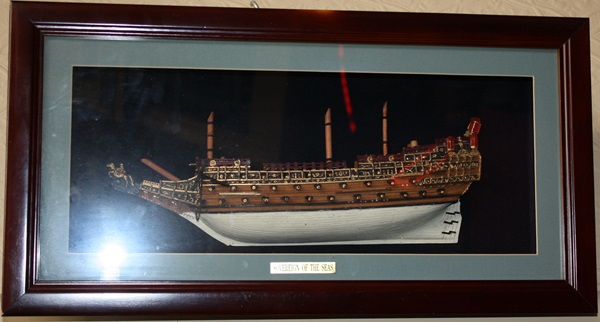
A print and text about Harts Barque (later Barkhart).
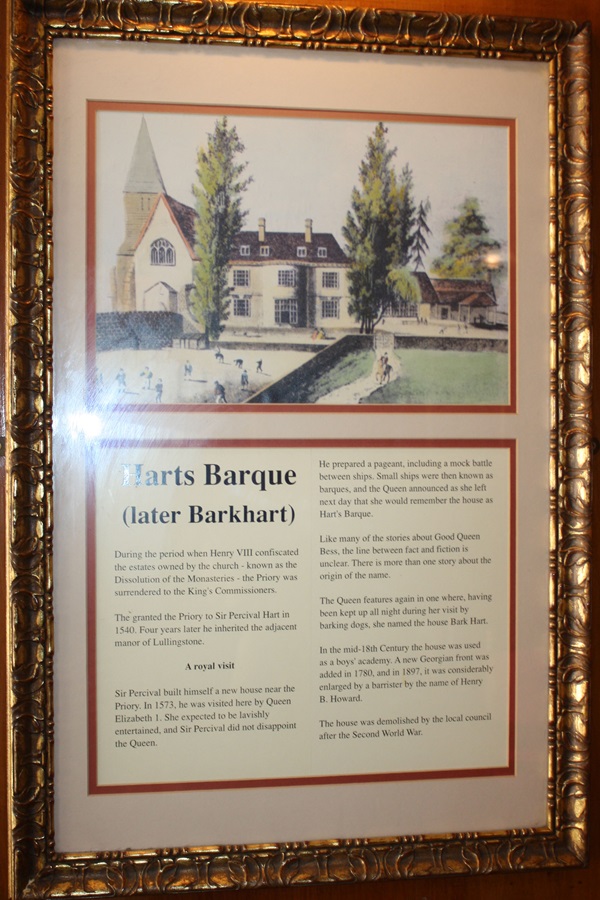
The text reads: During the period when Henry VIII confiscated the estates owned by the church - known as the Dissolution of the Monasteries the - Priory was surrendered to the King's Commissioners.
They granted the Priory to Sir Percival Hart in 1540. Four years later he inherited the adjacent manor of Lullingstone.
Sir Percival built himself a new house near the Priory. In 1573, he was visited here by Queen Elizabeth I. She expected to be lavishly entertained, and Sir Percival did not disappoint the Queen.
He prepared a pageant, including a mock battle between ships. Small ships were then known as barques, and the Queen announced as she left the next day that she would remember the house as Hart's Barque.
Like many of the stories about Good Queen Bess, the line between fact and fiction is unclear. There is more than one story about the origin of the name.
The Queen features again in one where, having been kept up all night during her visit by barking dogs, she named the house Bark Hart.
In the mid-18th century the house was used as a boys' academy. A new Georgian front was added in 1780, and in 1897, it was considerably enlarged by a barrister by the name of Henry B. Howard
The house was demolished by the local council after the Second World War.
Prints and text about famous cottages and walnut trees in Orpington.
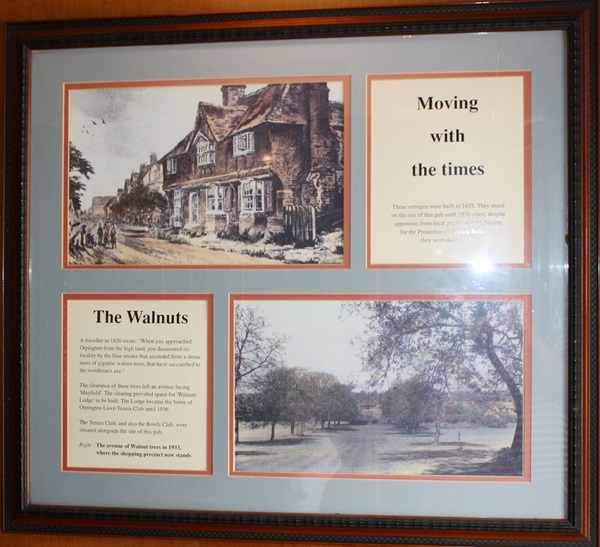
The text reads: Moving with the times
These cottages were built in 1635. They stood on the site of this pub until 1938 when despite opposition from local people and the society for the protection of Ancient Buildings they were demolished.
The Walnuts
A traveller in 1820 wrote: "When you approached Orpington from the high land, you discovered its locality by the blue smoke that ascended from a dense mass of gigantic walnut trees, that have succumbed to the woodman's axe."
The clearance of these trees left an avenue facing ‘Mayfield’. The clearing provided space for "Walnuts Lodge' to be built. The Lodge became the home of Orpington Lawn Tennis Club until 1936.
The Tennis Club, and also the Bowls Club, were situated alongside the site of this pub.
Right: The avenue of Walnut trees in 1933, where the shopping precinct now stands.
Prints and text about famous houses and cottages in Orpington.
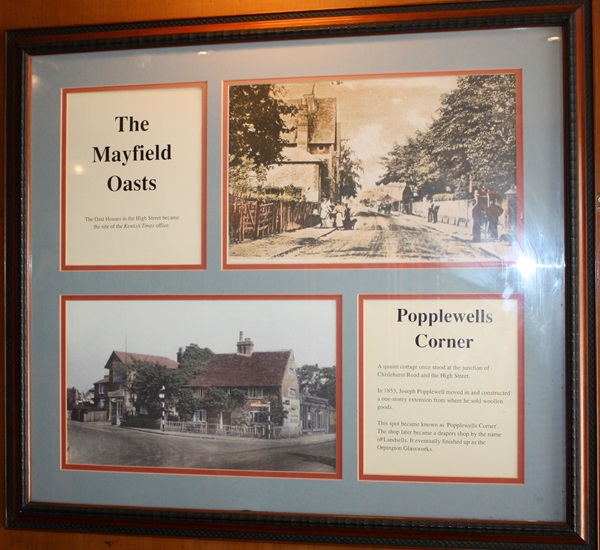
The text reads: The Mayfield Oats
The Oast Houses in the High Street became the site of the Kentish Times office.
Popplewells Corner
A quaint cottage once stood at the junction of Chislehurst Road and the High Street. In 1853, Joseph Popplewell moved in and constructed a one-storey extension from where he sold woollen goods.
This spot became known as Popplewells Corner. The shop later became a drapers shop by the name of Landsells. It eventually finished up as the Orpington Glassworks.
An illustration, print and text about Winston Churchill and the Willett Memorial.
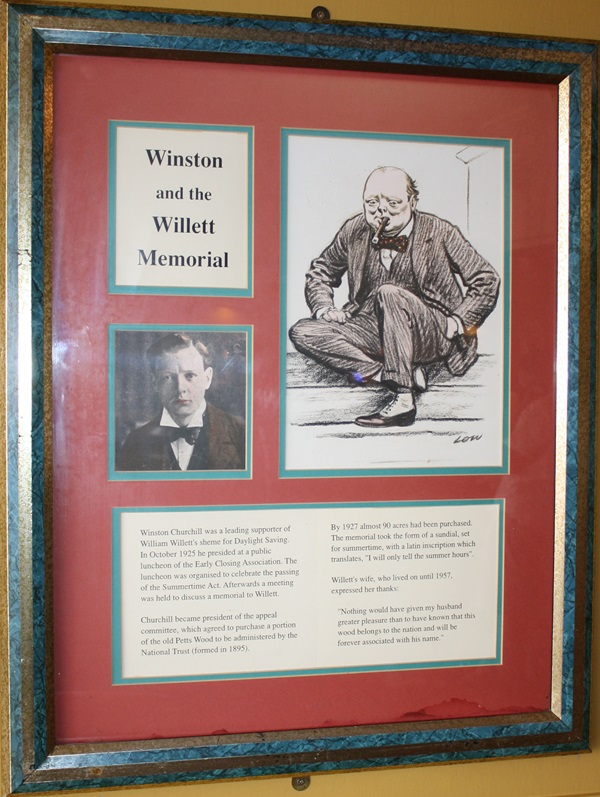
The text reads: Winston Churchill was a leading supporter of William Willett's scheme for Daylight Saving. In October 1925 he presided at a public luncheon of the Early Closing Association. The luncheon was organised to celebrate the passing of the Summertime Act. Afterwards a meeting was held to discuss a memorial to Willett.
Churchill became president of the appeal committee, which agreed to purchase a portion of the old Petts Wood to be administered by the National Trust (formed in 1895).
By 1927 almost 90 acres had been purchased. The memorial took the form of a sundial, set for summertime, with a Latin inscription which translates, "I will only tell the summer hours".
Willett's wife, who lived on until 1957, expressed her thanks:
"Nothing would have given my husband greater pleasure than to have known that this wood belongs to the nation and will be forever associated with his name."
Illustrations and text about Camden House.
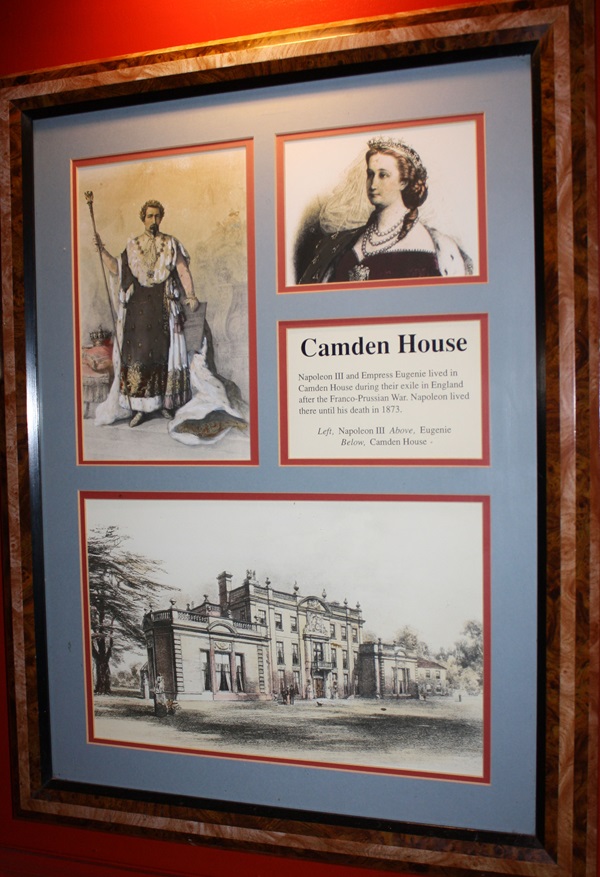
The text reads: Napoleon III and Empress Eugenie lived in Camden House during their exile in England after the Franco-Prussian War. Napoleon lived there until his death in 1873.
Left: Napoleon III
Above: Eugenie
Below: Camden House.
A print and text about an 1880s murder in Petts Wood.
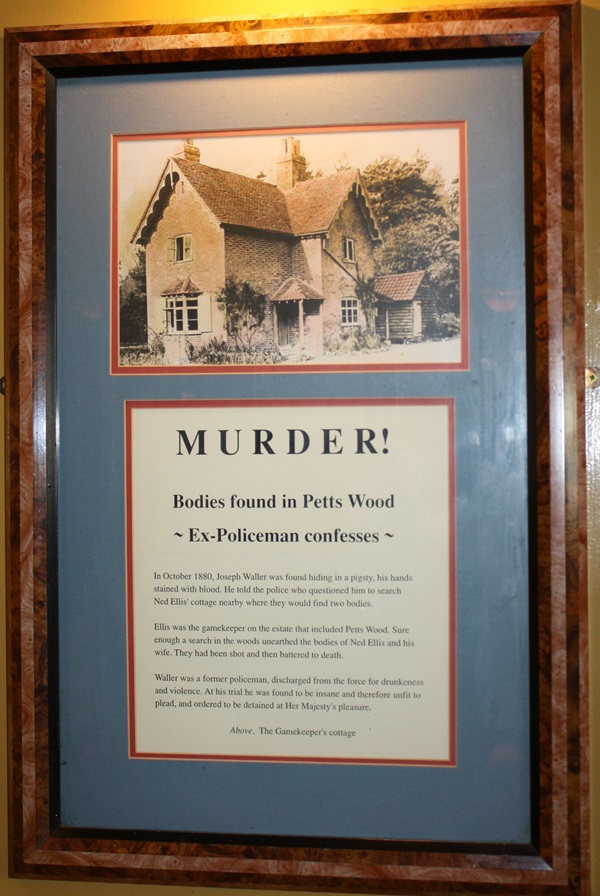
The text reads: In October 1880, Joseph Waller was found hiding in a pigsty, his hands stained with blood. He told the police who questioned him to search Ned Ellis' cottage nearby where they would find two bodies.
Ellis was the gamekeeper on the estate that included Petts Wood. Sure enough a search in the woods unearthed the bodies of Ned Ellis and his wife. They had been shot and then battered to death.
Waller was a former policeman, discharged from the force for drunkenness and violence. At his trial he was found to be insane and therefore unfit to plead, and ordered to be detained at Her Majesty's pleasure.
Above: The Gamekeeper's cottage.
Text about Amanda Enright.

The text reads: Amanda Enright, born in Bromley in 1971, studied at Ravensbourne College of Art and then at Camberwell College of Art.
She has exhibited her boxed constructions in 'Art in Boxes' at England & Co. Gallery, London, and has also had a recent exhibition at Saatchi & Saatchi Advertising Agency.
Amanda has worked in various media; paintings, assemblages and boxes. She has also worked on animated films and as an illustrator.
Amanda Enright lives in the Petts Wood area.
Text about how Petts Wood got its name.
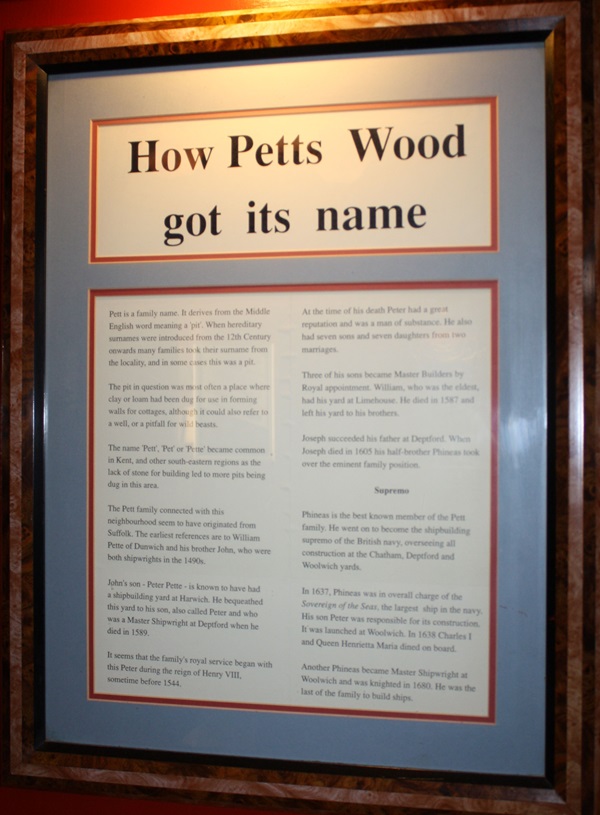
The text reads: Pett is a family name. It derives from the Middle English word meaning ‘pit’. When hereditary surnames were introduced from the 12th century onwards many families took their surname from a locality, and in some cases this was a pit.
The pit in question was most often a place where clay or loam had been dug for use in forming walls for cottages. Although it could also refer to a well, or pitfall for wild beasts.
The name ‘Pett’, ‘Pet’ or ‘Pette’ became common in Kent, and other south eastern regions as the lack of stone for building led to pits being dug in this area.
The Pett family connected with this neighbourhood seem to have originated from Suffolk. The earliest references are William Pette of Dunwich and his brother John, who were both shipwrights in the 1940s.
John’s son- Peter Pette- is known to have had a shipbuilding at Harwich. He bequeathed this yard to his son, also called Peter and who was a Master Shipwright at Deptford when he died in 1589.
It seems the family’s royal service began with this Peter during the reign of Henry the VIII, sometime before 1544.
At the time of his death Peter had a great reputation and was a man of substance. He also had seven sons and seven daughters from two marriages.
Joseph succeeded his father at Deptford. When Joseph died in 1605 his half-brother Phineas took over the eminent family position.
Phineas is the best known member of the Pett family. He went on to become the shipbuilding supremo of the British navy, overseeing all construction at the Chatham, Deptford and Woolwich yards.
In 1637, Phineas was in overall charge of the Sovereign of the Seas, the largest ship in the navy. His son Peter was responsible for its construction. It was launched at Woolwich. In 1638 Charles I and Queen Henrietta Maria dined on board.
Another Phineas became Master Shipwright at Woolwich and was knighted in 1680. He was the last family to build ships.
A print of Phineas Pett.
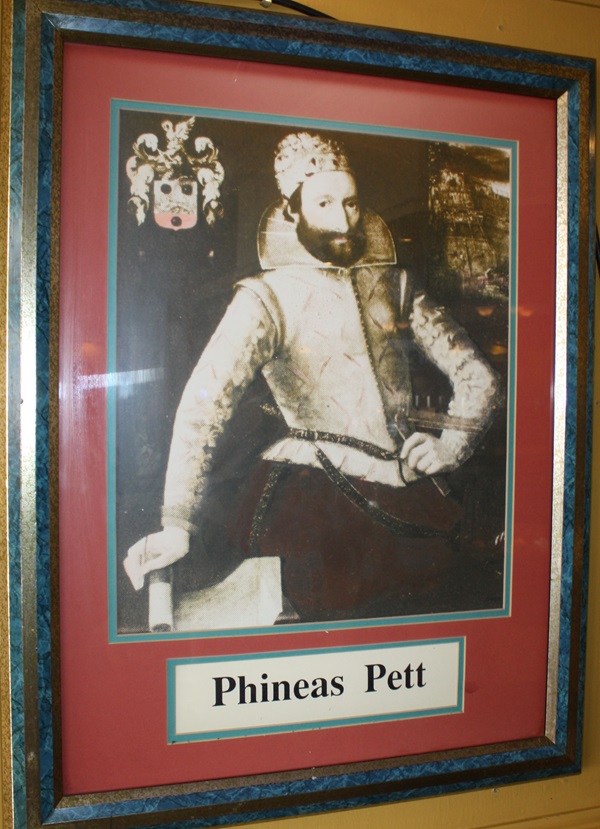
Prints and text about the French Resistance.
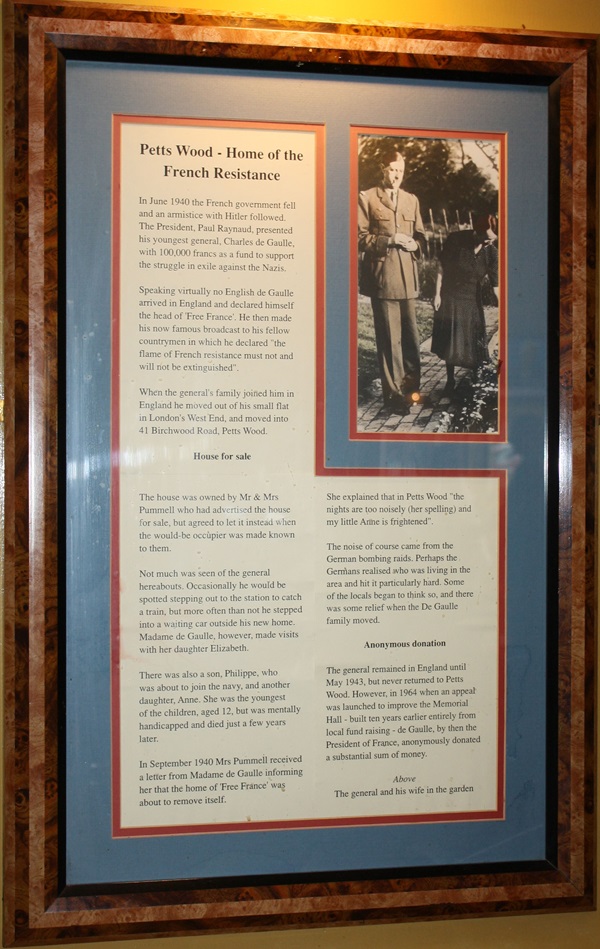
The text reads: In June 1940 the French government fell and an armistice with Hitler followed. The President, Paul Raynaud, presented his youngest general, Charles de Gaulle with 100,000 francs as a fund to support the struggle in exile against the Nazis.
Speaking virtually no English de Gaulle arrived in England and declared himself the head of Free France'. He then made his now famous broadcast to his fellow countrymen in which he declared "the flame of French resistance must not and will not be extinguished".
When the general's family joined him in England he moved out of his small flat in London's West End, and moved into 41 Birchwood Road, Petts Wood.
The house was owned by Mr & Mrs Pummell who had advertised the house for sale, but agreed to let it instead when the would-be occupier was made known to them.
Not much was seen of the general hereabouts. Occasionally he would be spotted stepping out to the station to catch a train, but more often than not he stepped into a waiting car outside his new home. Madame de Gaulle, however, made visits with her daughter Elizabeth.
There was also a son, Philippe, who was about to join the navy, and another daughter, Anne. She was the youngest of the children, aged 12, but was mentally handicapped and died just a few years later.
In September 1940 Mrs Pummell received a letter from Madame de Gaulle informing her that the home of ‘Free France' was about to remove itself.
She explained that in Petts Wood "the nights are too noisely (her spelling) and my little Anne is frightened".
The noise of course came from the German bombing raids. Perhaps the Germans realised who was living in the area and hit it particularly hard. Some of the locals began to think so, and there was some relief when the De Gaulle family moved.
The general remained in England until May 1943, but never returned to Petts Wood. However, in 1964 when an appeal was launched to improve the Memorial Hall- built ten years earlier entirely from local fund raising - de Gaulle, by then the President of France, anonymously donated a substantial sum of money.
Above: The general and his wife in the garden.
An illustration referring to William Willett's scheme for Daylight Saving and a photograph of The Willett Memorial.
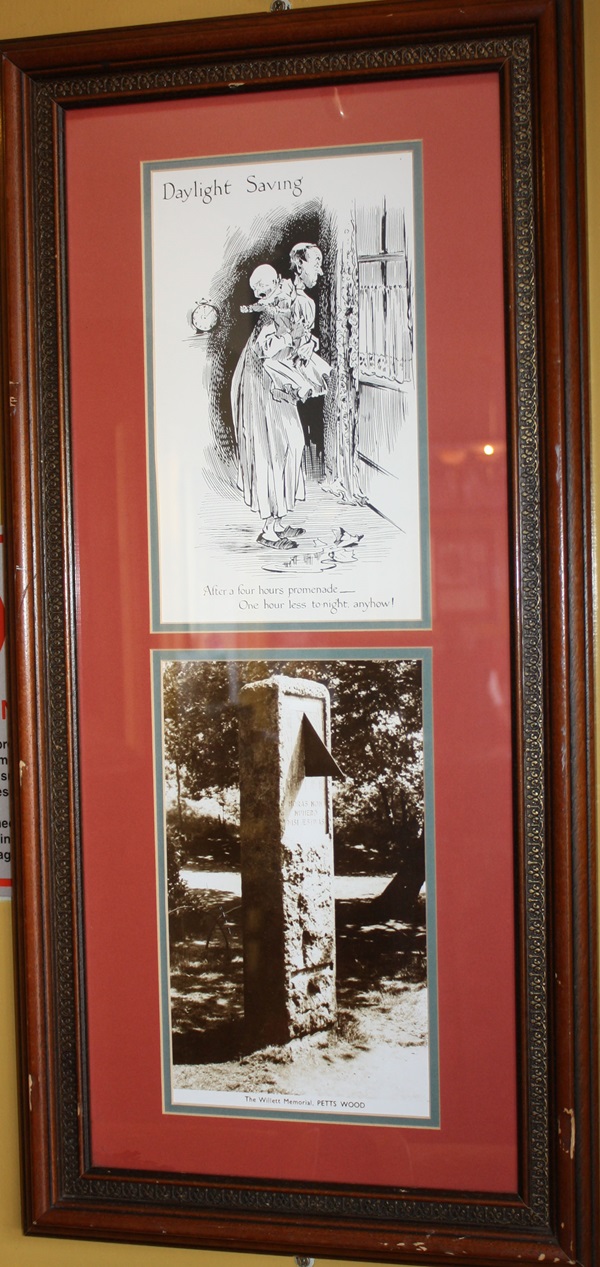
Photographs of Petts Wood Station c1930.
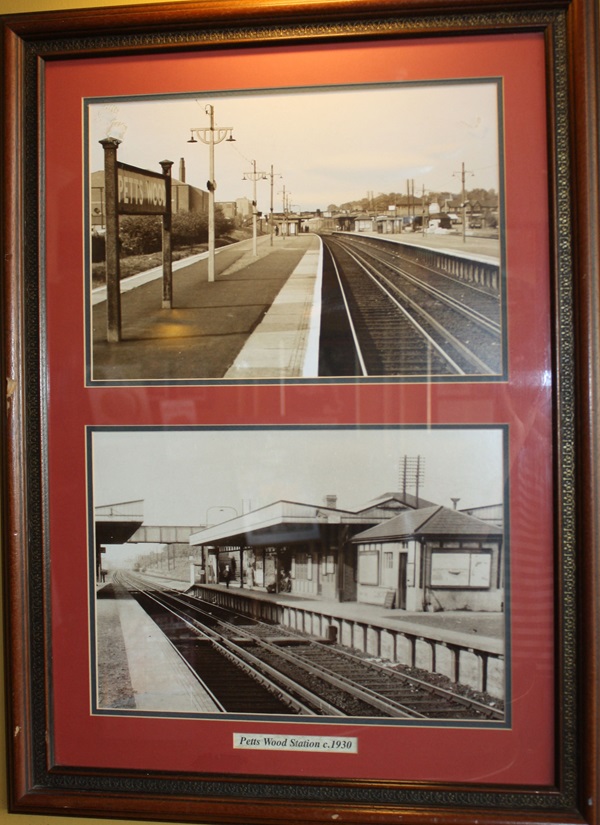
Photographs of Frankswood Avenue c1930 and Woodhurst Avenue c1930.
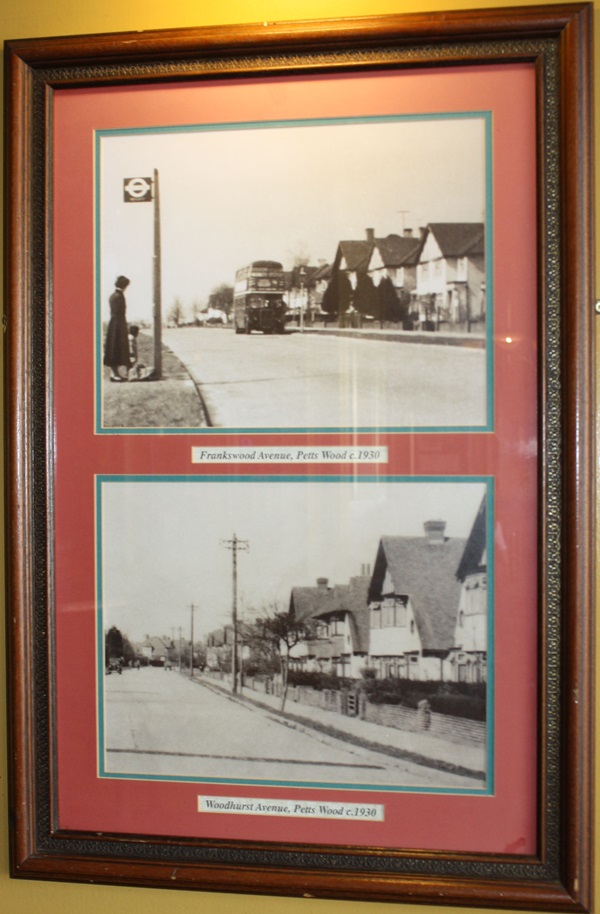
Photographs of The Square, Petts Wood c1950.
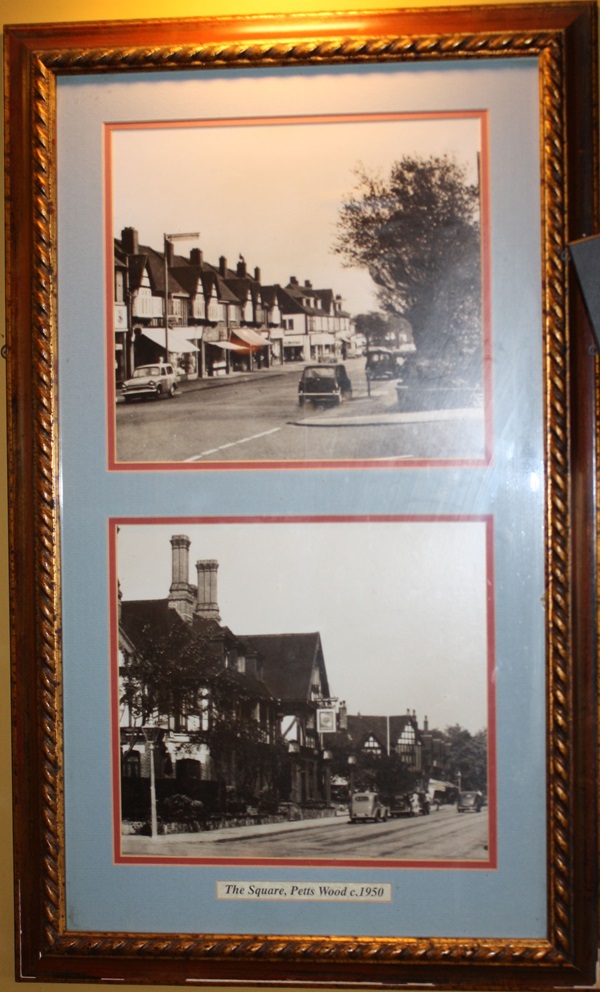
Photographs of Chislehurst Road c1930 and Birchwood Road c1938.
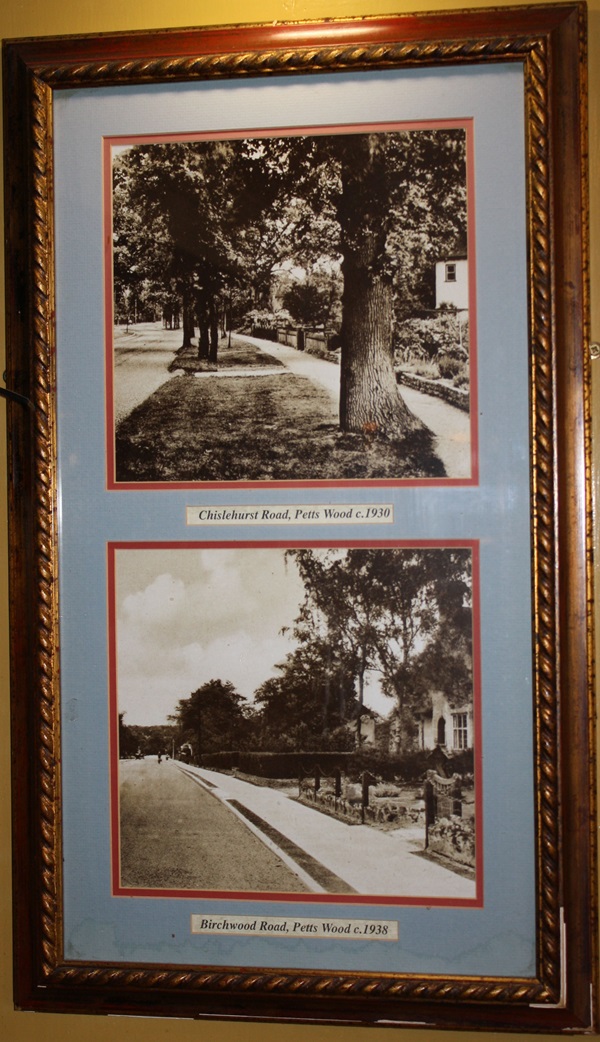
External photograph of the building – main entrance.
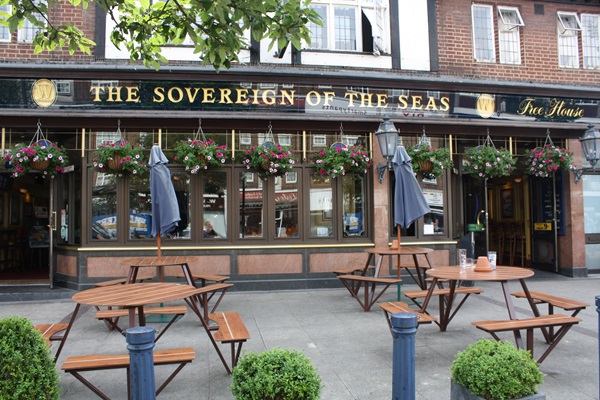
If you have information on the history of this pub, then we’d like you to share it with us. Please e-mail all information to: pubhistories@jdwetherspoon.co.uk